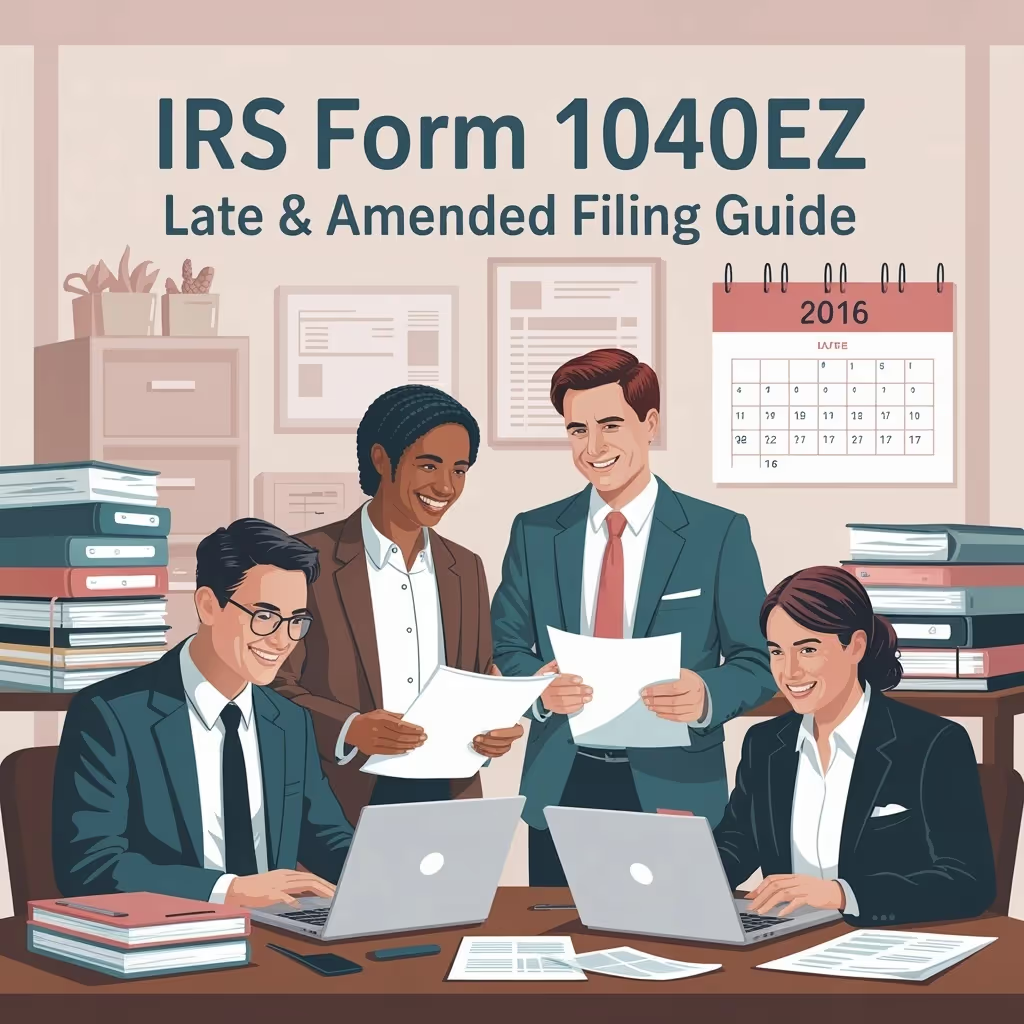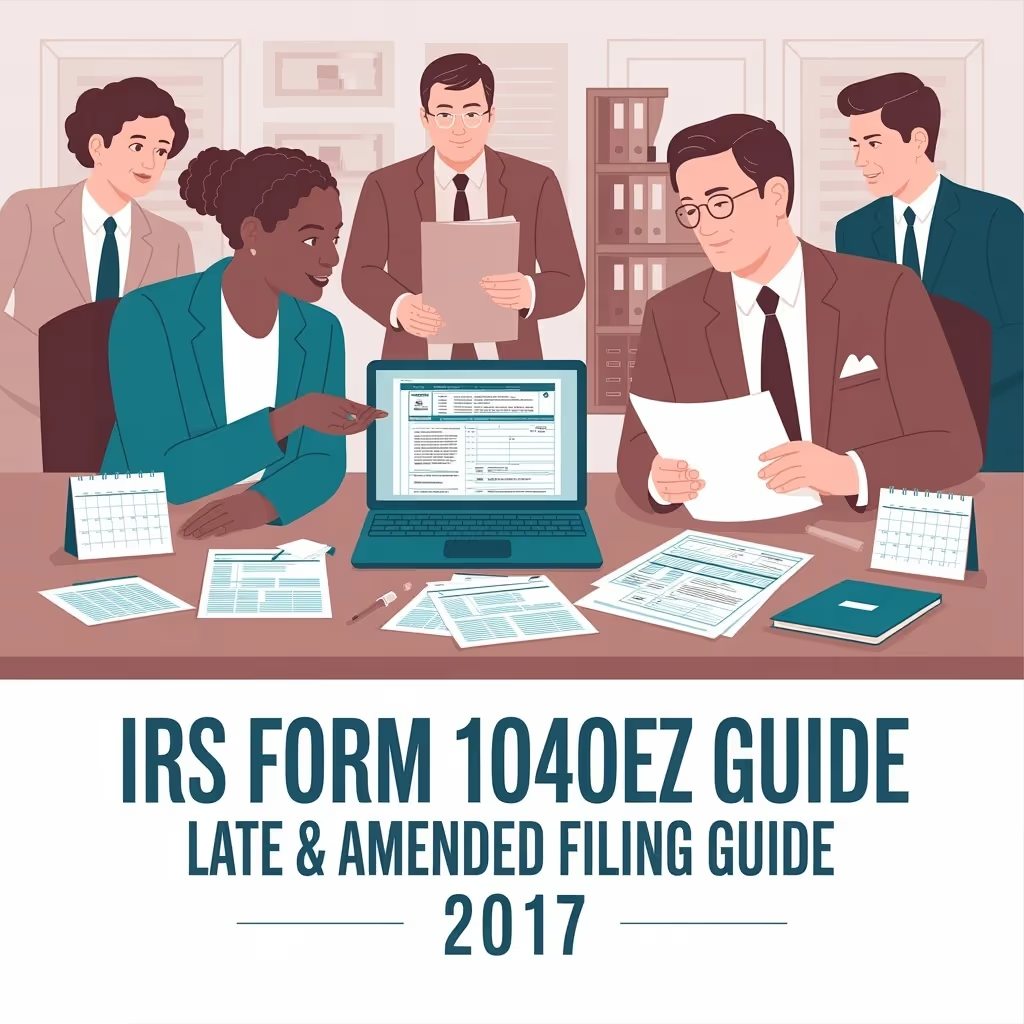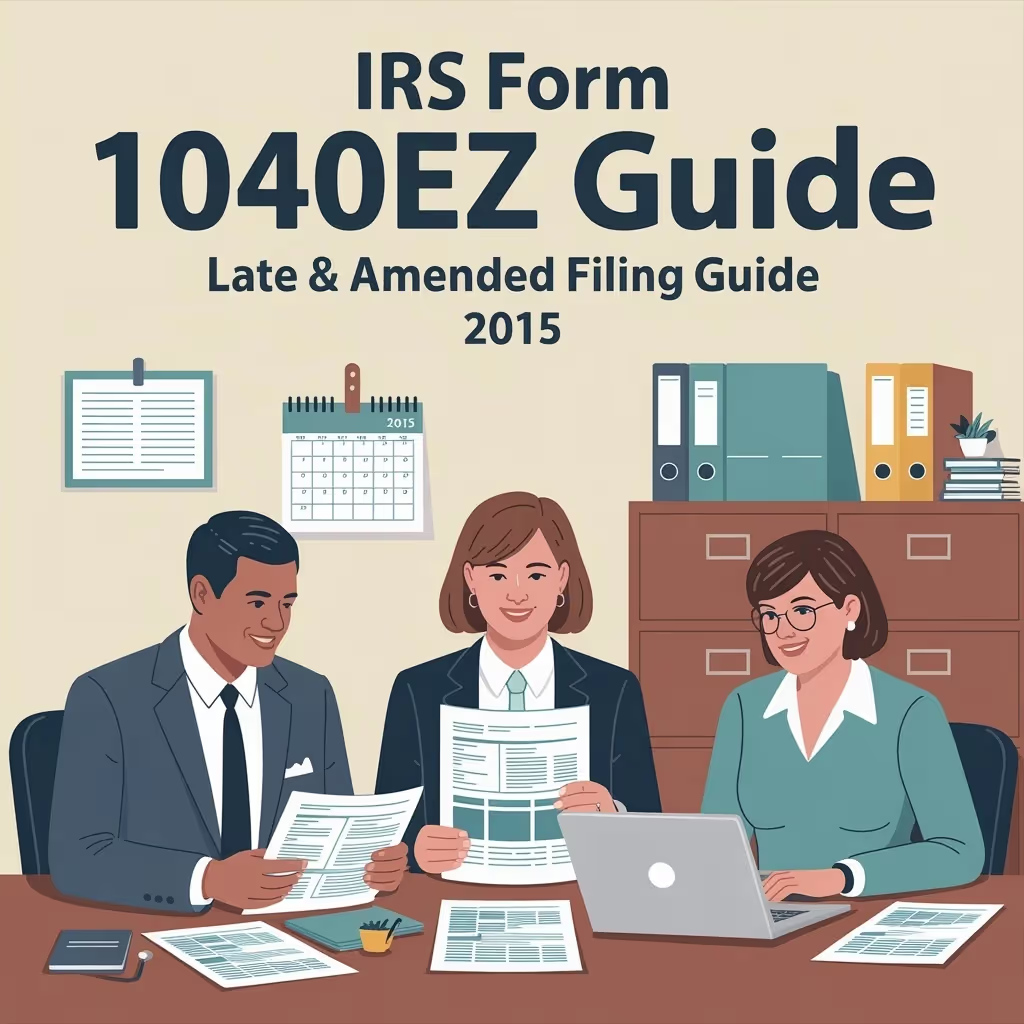IRS Form 1040EZ (2016): Late and Amended Filing Guide

What IRS Form 1040EZ (2016) Is For
IRS Form 1040EZ (2016) was the simplest individual income tax return used by taxpayers with straightforward financial situations. It applied to individuals who were single or married filing jointly, under age 65, and had no dependents. The form was designed for those with taxable income under $100,000, limited interest income, and no credits other than the Earned Income Credit.
This form was used for the 2016 tax year and has since been discontinued. The IRS replaced it with the redesigned Form 1040. However, you may still file Form 1040EZ (2016) as a prior year return if you never filed or need to correct your information. Always use the official version of the form available on IRS.gov and follow the instructions provided.
When You’d Use Form 1040EZ for 2016 (Late or Amended Filing)
You would file IRS Form 1040EZ (2016) if you did not file your 2016 income tax return or if you must amend your prior filing to correct an error. Typical situations include receiving an IRS notice, discovering that you owe additional tax, or realizing you were eligible to claim a refund.
Generally, taxpayers have three years from the original due date to claim a refund. The refund window for 2016 expired on April 18, 2020, unless certain exceptions applied under federal law, such as active military service. Even if you cannot receive a refund, filing the return helps you stay compliant and avoid additional penalties and interest.
Key Rules Specific to the 2016 Tax Year
- Due date: The original due date for 2016 returns was April 18, 2017, adjusted for weekends and the Emancipation Day holiday.
- Refund rule: The IRS could not send refunds before February 15, 2017, for returns claiming the Earned Income Credit or Additional Child Tax Credit.
- Income limits: Single filers had to earn less than $14,880, and married filing jointly filers had to earn less than $20,430 to qualify.
- Investment income: The investment income limit for using this form is $3,400.
- Form discontinued: After 2017, taxpayers must use the redesigned Form 1040.
Learn more about Form 1040EZ and other simplified individual returns to better understand late or amended filing options.
Step-by-Step (High Level)
- Gather transcripts: Request your 2016 wage and income transcripts from IRS.gov/transcript. You will need your Social Security number, verified financial account access, and mailing address to complete this step.
- Complete IRS Form 1040EZ 2016: Use only the official prior year form available on the IRS website and follow the detailed instructions carefully.
- Verify eligibility: Ensure that you qualify by checking your filing status, age, income limits, and credit eligibility. The taxable interest limit for 2016 was $1,500.
- No schedules needed: This form is a standalone tax return designed for basic individual situations. No extra schedules are required.
- Mail your return: You must send your paper return to the correct IRS address listed in the 2016 instructions. You cannot e-file prior-year forms.
- Keep copies: Keep all records, such as W-2s and 1099s, for at least three years from the date you file. Keeping accurate records helps if the IRS issues a notice or requests additional information.
Common Mistakes and How to Avoid Them
- Using the wrong form: Only use IRS Form 1040EZ (2016) if you were single or married filing jointly, under age 65, and had no dependents.
- Exceeding income limits: If your taxable income exceeded $100,000 or your interest income was over $1,500, you must use Form 1040A or Form 1040.
- Claiming disallowed credits: You cannot claim the Premium Tax Credit or other credits requiring additional forms on Form 1040EZ.
- Incorrect age calculation: Anyone born on January 1, 1952, was considered 65 in 2016 and therefore did not qualify to use Form 1040EZ.
- Unreported income: You must report all income, including wages, tips, taxable scholarships, unemployment, and Alaska Permanent Fund dividends.
- Foreign accounts: Individuals with foreign financial assets requiring Form 8938 cannot use Form 1040EZ.
What Happens After You File
Processing a prior-year paper return generally takes six to eight weeks, although additional days may be required for incomplete or complex filings. You can find the status of your refund or account online by visiting the IRS “Where’s My Refund?” tool.
If you owe tax, the IRS will send a notice outlining the balance, IRS penalties, and payment options. Penalties include a 5% per month failure-to-file penalty (up to 25%) and a 0.5% per month failure-to-pay penalty. Interest continues to accrue daily until full payment is made.
If you cannot pay the full balance, you may apply online for an installment agreement using Form 9465 or send an estimated payment to reduce interest. Filing as soon as possible helps limit additional costs and avoid liens or wage garnishments.
FAQs
Can I still get a refund for my 2016 taxes?
No, refunds for the 2016 tax year expired on April 18, 2020. Certain exceptions apply, such as active military service or disaster relief. Even if you cannot get a tax refund, you must still file your return to keep your account current and protect your filing record.
Will I owe penalties for filing my 2016 return late?
Yes, if you owe taxes, the IRS will assess penalties and daily interest until you pay the full amount. Filing now helps reduce what you owe and prevents further collection actions.
How do I get my 2016 tax transcripts?
You can request your transcripts online at IRS.gov/transcript or call 1-800-908-9946. You will need your Social Security number and other identifying information to verify your identity.
What if I am unable to pay the full amount I owe?
You should still file your return. Then apply online for a payment plan or submit Form 9465. The IRS offers both short-term and long-term payment options depending on your balance and financial situation.
Can I e-file a 2016 return?
No, you cannot e-file a return from a prior year. You must send your completed Form 1040EZ 2016 to the correct IRS mailing address. Using certified mail helps verify the date and ensures your return is received.
For more resources on filing or understanding prior-year IRS forms, visit our Form Summaries and Guides Library.



























